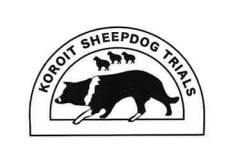Farm biosecurity has three key aims:
- Prevent entry of disease,
- Contain spread if a disease does arrive on farm, and
- Minimize the impact of disaese if/when it occurs.
When purchasing or agisting cattle, there are four key diseases that are important to be aware of: Pestivirus, Salmonella, Strep ag and Mycoplasma. Why? They all have the ability to cause substantial disease and economic loss in dairy herds and we see them affecting herds after purchasing cattle.
Tell me more about the big four!
Salmonella: a bacteria that causes scours in cows and calves, and on occasion pneumonia, jaundice, joint infections and death. It can occur as outbreaks in cows, heifers and calves.
It can enter farms a number of ways: water/effluent run off, contaminated feed/equipment/vehicles, birds and insects and carrier cattle. These carrier animals will shed salmonella intermittently. Stresses such as calving, transport, or feed restrictions will increase shedding and/or clinical disease. There are many different strains of salmonella and vaccines are available that help reduce clinical diseases. We are seeing more and more cases of antibiotic resistance in salmonella. It is also a zoonosis, which means it can cause disease in people.
Pestivirus: can cause significant reproductive losses in naïve herds when they are exposed to carrier cattle that are shedding the virus (known as persistently infected animals, or “PIs”). These losses include poor conception rates, abortions, congenital abnormalities and the birth of more PIs. PI calves can also affect immunity levels in the calf shed. There is no treatment for Pestivirus but a vaccine is available to help prevent infections.
Strep agalactiae: A bacteria that causes mastitis, more commonly known as “Strep ag”. It lives only within the cow’s udder and is excreted in very large numbers in the milk. It has the potential to spread rapidly from cow to cow during milking and can result in a significant increase in the number of cows with high cell counts, a rise in bulk milk cell count, and an increased number of clinical mastitis cases.
Mycoplasma: A bacteria that can cause mastitis, pneumonia, jaw swellings, and joint infections in cows and joint infections, pneumonia, and ear infections in calve (see photos below). Mycoplasma rarely responds to antibiotics and animals must be culled. Carrier animals will shed the bacteria intermittently in saliva, nasal secretions, and milk. They may also have flare up of clinical signs. There is no vaccine against Mycoplasma.

What tests can I do before buying cattle?
Pestivirus: Test your bulk milk for Pestivirus antibody levels to know if your herd is naïve or not. If the herd is naïve, it is VITAL that persistently infected animals don’t enter the herd – particularly at joining or during pregnancy. Heifers’ immunity levels are harder to assess, but can be done by taking blood samples and testing antibody levels. If your herd has low or no antibodies, ensure that cattle (bulls, cows, heifers, calves) are certified ear-notch negative prior to purchase.
Salmonella: nothing, unless the farm in question volunteers their history. Quarantine animals for 10 days prior to them entering the herd, heifer group or calf group. Salmonella can flare up when animals are stressed (such as transport).
Strep ag: Bulk milk “PCR” of the farm of origin. This test looks for the DNA of Strep ag. If the bacteria is present in the herd, it is very likely to show up on this test. Patterns of BMCC give a clue that Strep ag is present and individual cow cell counts will show cows that are likely to be infected with mastitis organisms (and of course those that are unlikely to be infected).
Mycoplasma: Bulk milk PCR of the farm of origin. As for Strep ag, this test detects the DNA of Mycoplasma organisms. If present, don’t purchase cattle from that farm. Be aware that the bulk milk PCR only tests cows in the vat and not the sick herd; affected animals may be missed. While a positive test indicates that Mycoplasma is present in the herd a negative test is not a guarantee of its absence.

These are the results of Pestivirus bulk milk testing a year apart. Both years the antibody level of the herd was very high. The first year a PI was likely running in the herd and shedding the virus in her milk.
What tests can I do if I’ve already purchased cattle and have not taken any biosecurity measures?
Pestivirus: As above, ensuring purchased cattle are ear notched prior to them contacting the herd.
Salmonella: Take samples from scouring animals (or call the vet to take samples). This helps identify if a) it is present, b) what strain it is and c) what antibiotic or vaccine is best to use.
Strep ag: Sample each cow’s milk or run a bulk milk PCR test. If the cows are lactating and Strep ag is present it will show up in these tests.
Mycoplasma: PCR test of milk from purchased cattle. This can be done individually or as a pool. Quarantine animals until results are clear. Collect and culture clinical mastitis samples to monitor which pathogens are causing disease. Testing the bulk milk with the PCR test 1‒2 times throughout the year will monitor herd status.

These are the results from a bulk milk PCR tests. It has detected yeast, Strep uberis and Strep dysgalactiae – which could have come from both infected milk and the surface of the cow’s teats. It also has detected Mycoplasma – which will have come from infected milk.
What else can I do to help contain spread or minimise the effect of these diseases?
If unable to keep a closed herd there are several things that can help reduce the risk of disease:
- Only purchase heifers
- Vaccinate heifers against Pestivirus prior to first joining is an easy safeguard to prevent exposure to PIs while pregnant. It is particularly worthwhile if using fixed time AI/sexed semen
- Purchase cows from herds with low bulk milk cell count, and low clinical case rate. Cows should have low individual cell count and no history of clinical mastitis
- Ensure good record keeping to help monitor spread of mastitis and make good culling decisions
- Maintain milking hygiene and ensure good teat disinfectant and emollient concentration and coverage. Milk clinical cases and high cell count cows last: this ensures that the clusters are cleaned well before milking another cow
- Don’t feed calves waste milk. Never feed them milk from another farm
- Pasture hygiene: prevent contamination of pasture by animals, effluent, runoff
- Always wear gloves when handling sick cows and calves, and treat them after handling healthy animals. Wash and sanitise boots and equipment. Isolate sick animals
- Ensure good rumen health in cows and good, consistent milk feeding in calves
These notes should be used as a general guide. An individual herd will have specific biosecurity needs, may view different diseases as more or less important, and have a unique attitude to risk. Other diseases that may need a biosecurity plan include Bovine Johnes disease (BJD), Infectious Bovine Rhinotracheitis (IBR), liver fluke, Theileria, drench resistant worms, and vibriosis. If you are planning on purchasing cattle, please speak with one of our vets who have extensive experience in biosecurity, disease management, and interpretation of test results.






























